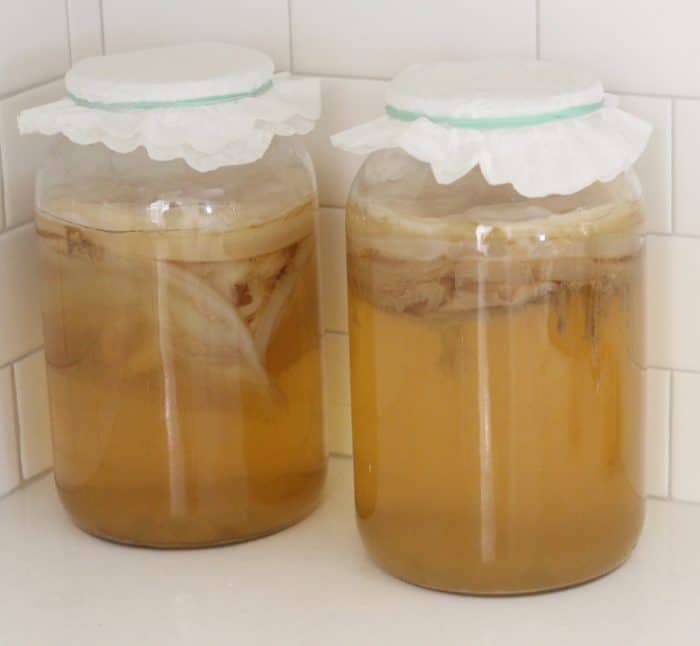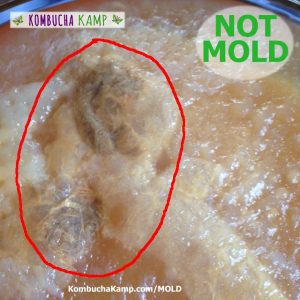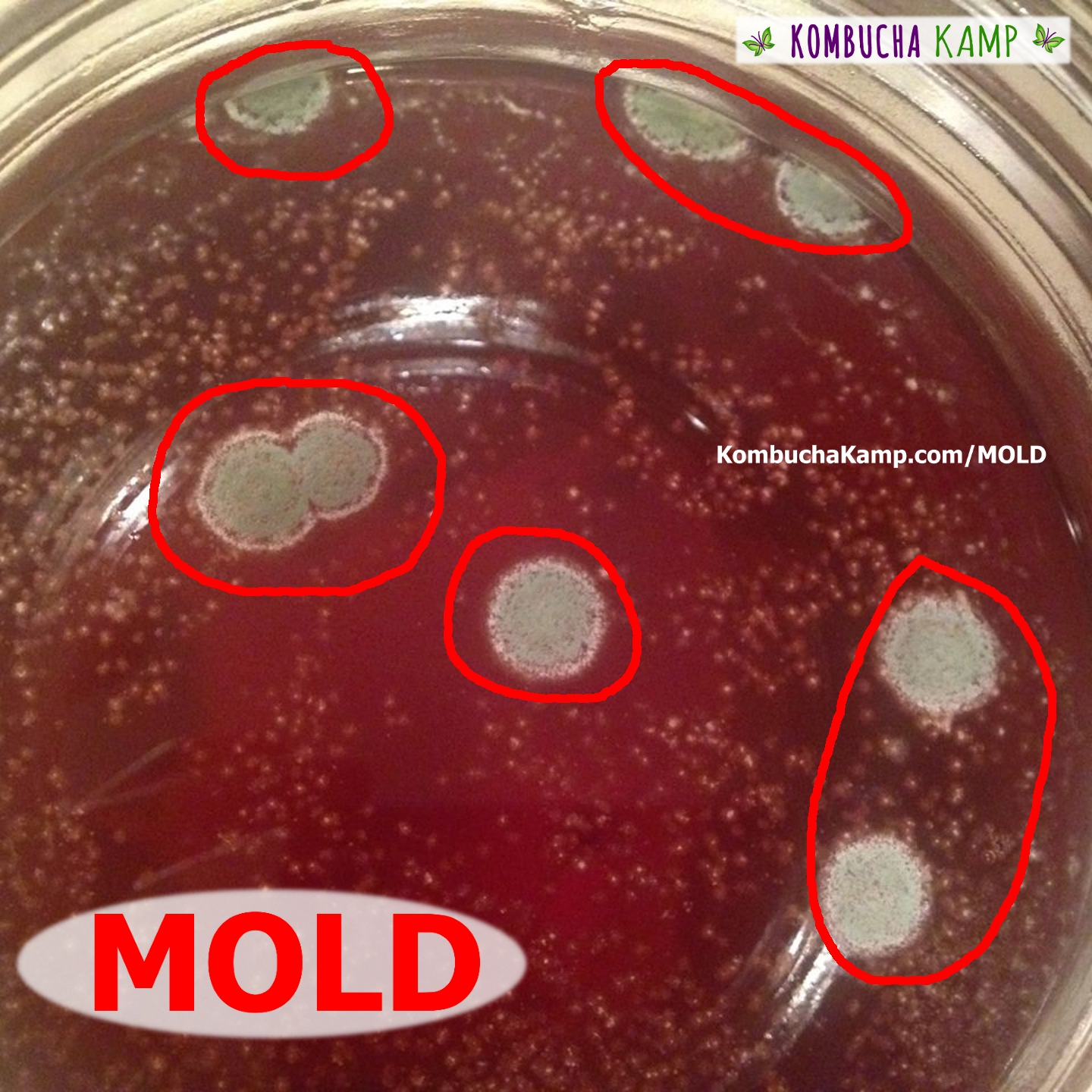This post contains affiliate links. Please see our disclosure statement for more information about the affiliate links used in this blog.

One thing I’ve gotten into recently is making my own kombucha. Kombucha is a fermented tea drink that contains probiotics. There are quite a few websites about brewing kombucha, but this blog post will provide you with unique and useful kombucha brewing techniques that I haven’t seen described on other websites (including the use of a fish tank heater).

I mainly became interested in Kombucha because it contains probiotics that promote good health in many ways. According to health.harvard.edu, probiotics improve immune function, help prevent infection by protecting you against harmful bacteria, improve digestion, and promote absorption of nutrients.

Many health food stores carry kombucha, but it’s expensive. Around where I live, stores sell kombucha for about $3.00 for a 16 ounce bottle. If you make kombucha yourself, you can brew a gallon for about $1.50 after the price of your initial starter materials.
There are many ways to begin brewing your own kombucha. I made my first batch by purchasing a starter kit on Amazon. Starter kits are handy because they make the brewing process very simple and straightforward. If you feel confident, however, you can forgo the brewing kit and just purchase these materials:
- A SCOBY (Symbiotic Culture Of Bacteria and Yeast)
- Starter liquid (e.g., pre-made plain kombucha)
- A glass jar that holds at least one gallon in volume
- A piece of cotton cloth that will fit over the opening of the jar
- An elastic band to secure the cotton cloth over the opening of the jar
- High-quality, preferably organic, loose leaf caffeinated tea (black or green tea works)
- Non-fluorinated water
- Organic sugar

I found tips for brewing kombucha from three main sources: kombuchakamp.com, The Big Book of Kombucha, and the basic instructions that were included in my starter kit. I highly recommend consulting these sources before you start brewing kombucha. There are several ways that the brewing process could go wrong, and your kombucha could end up being harmful rather than healthy. It’s important to know the details about how to safely brew kombucha before you start your first batch.


The very important key to making kombucha is to use clean, sterilized utensils and vessels. You will use your kombucha SCOBY over and over for months or years. If any harmful bacteria enters at any stage of the brewing process, the SCOBY can get contaminated, which means you can get contaminated when you drink your kombucha. If you ever feel that your kombucha might have gotten cross-contaminated at any stage of the brewing process, it’s best to start over with a new SCOBY and new starter liquid.

Here is the single batch brewing process I used for my first kombucha batches:
- Boil 4 cups of water in a medium saucepan.
- When water has reached a rolling boil, remove it from the burner.
- Place a tea ball or a tea sachet containing 3 tablespoons of loose leaf tea into the pan. I use a blend of this green tea and black tea.
- Steep the tea for 5 – 6 minutes.
- Remove the tea ball and add 1 cup of organic sugar to the pan. Stir until the sugar is dissolved.
- Add the 4 cups of sweet tea you made into a one gallon glass jar.
- Add cold, non-fluorinated water to the glass jar, leaving about 2 inches of space at the top.
- Measure the temperature of the tea.
- When the temperature is anywhere between 68 – 84 degrees Fahrenheit, you can add your SCOBY and one cup of starter liquid.
- Secure a cotton cloth with a rubber band over the opening of the jar and leave your kombucha to brew for 7 – 21 days. The temperature needs to remain between 68 and 84 degrees F to ensure the SCOBY stays healthy and doesn’t grow mold.
- Test your kombucha after 7 days. If it is too sweet, leave it to brew for a couple more days and test it again. You can also measure the pH level using pH testing strips. Kombucha should ideally be between a 2.5 to 3.5 pH level before you bottle it.
- Once the kombucha tastes right and has the right pH level, bottle it, leaving 1 cup of the liquid for brewing your next batch. You can use clean, empty, store-bought Kombucha bottles you saved or you can buy new bottles.
- When you’ve bottled your kombucha, make another batch of sweet tea to add to the jar to keep your SCOBY alive and healthy.
If you regularly drink more than one gallon of kombucha per week, you can use the continuous brewing method to make bigger batches. You can read more about this method at the Kombucha Kamp website.

Here are three key things I have learned through my experience in brewing kombucha.
- It is difficult to keep the brew warm enough in the winter months. Many of the kombucha websites recommend using a heating pad to keep your kombucha the right temperature, but I didn’t want to resort to keeping a heating pad plugged in all day everyday to protect my kombucha. After talking about this problem with my husband, Tony, he proposed an ingenious solution: use a fish tank heater. These heaters are made to be constantly submersed in liquid, they are made of kombucha-friendly glass (not plastic), and they have their own built-in thermostat. In the first picture in this post, you can see the fish tank heater I’m keeping in my kombucha over the winter.
- You can find affordable high-quality organic loose leaf tea that works great for kombucha without having to buy loose leaf tea labeled “Kombucha Tea” that sells for more than twice as much.
- The continuous brewing method is much easier than the single batch brewing method if you know you will drink more than a gallon of kombucha per week. The key to the continuous brewing method is to make time every week to bottle your kombucha and add new sweet tea to keep your SCOBY alive and well.
I hope this information is helpful to you kombucha lovers! I’ve had success with my kombucha brewing process and saved a lot of money by making it myself.

